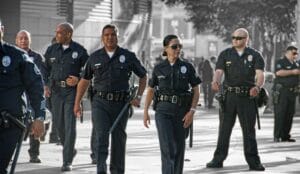This year, political candidates throughout the country have published thousands of advertisements concentrating on violent crime, and most registered voters consider the topic as highly important in the Nov. 8 midterm elections. However, official federal government figures offer a confusing picture of recent developments in the United States’ violent crime rate.

With Election Day rapidly coming, here’s a deeper look at voter views about violent crime, as well as an examination of the nation’s violent crime rate. All conclusions are based on Center surveys and the federal government’s two principal crime measures: a big yearly survey conducted by the Bureau of Justice Statistics (BJS) and an annual analysis of local police statistics conducted by the Federal Bureau of Investigation (FBI) (FBI).
- Six out of ten registered voters (61%) feel violent crime is extremely important when deciding who to vote for in this year’s congressional elections. According to the Center’s October study, violent crime ranks between energy policy and health care in perceived significance as a midterm concern, but well behind the economy.Republican voters are far more likely than Democratic voters to consider violent crime to be a critical voting issue this year. Approximately three-quarters of Republican and Republican-leaning registered voters (73%) say violent crime is very important to their vote, compared to roughly half of Democratic and Democratic-leaning registered voters (49%).
- Conservative Republican voters are particularly concerned about the issue: In comparison, 63% of moderate or liberal Republican voters, 65% of moderate or conservative Democratic voters, and only about a third of liberal Democratic voters (34%), see violent crime as very important to their vote.Older voters are significantly more likely than younger voters to consider violent crime a critical election issue. Three-quarters of registered voters 65 and older believe violent crime is a very significant voting concern for them this year, compared to 44% of voters under 30.
- Compared to 65% of Hispanic and 56% of White registered voters, 81% of Black registered voters say violent crime is very important to their midterm vote. (There were insufficient Asian American voters in the Center’s survey to conduct an independent analysis.) Among Democratic registered voters, racial differences are especially pronounced. While 82% of Black Democratic voters say violent crime is very important to their voting decision this year, only one-third of White Democratic voters agree.
- The Bureau of Justice Statistics’ annual government surveys show no recent increase in the rate of violent crime in the United States. There were 16.5 violent crimes for every 1,000 Americans aged 12 and up in 2021, the most recent year for which data is available. According to the National Crime Victimization Survey, this was statistically unchanged from the previous year, lower than pre-pandemic levels, and far lower than rates recorded in the 1990s.
- There was no statistically significant rise in any of the four violent crime types monitored in the study in 2020 or 2021: simple assault, aggravated assault, robbery, and rape/sexual assault.Every year, roughly 240,000 Americans aged 12 and older are polled for the National Crime Victimization Survey, which asks individuals to recount any recent encounters they have had with crime. The poll includes crimes that were threatened, attempted, or accomplished, regardless of whether they were reported to authorities. Notably, because it is based on interviews with surviving crime victims, it does not monitor the most serious kind of violent crime, murder.




